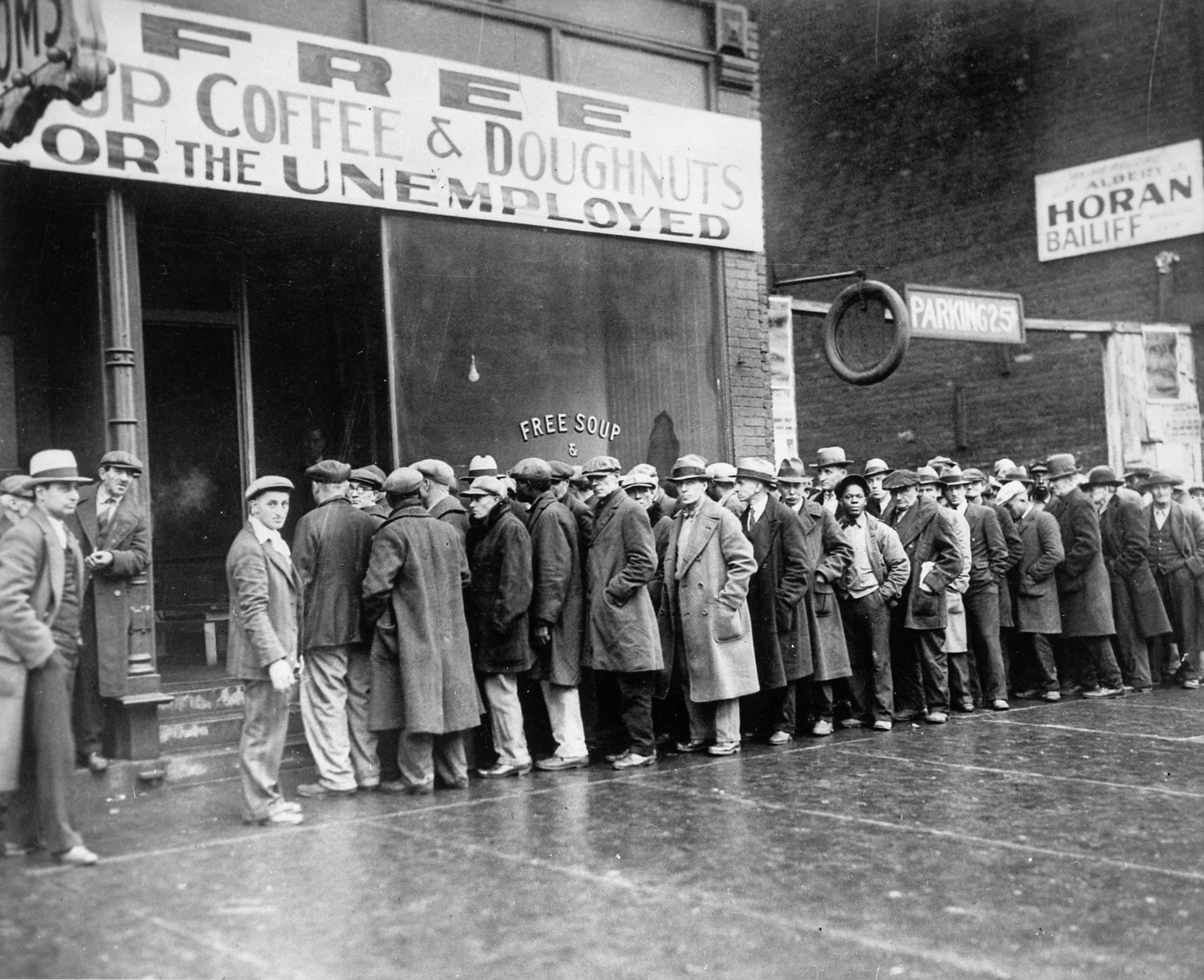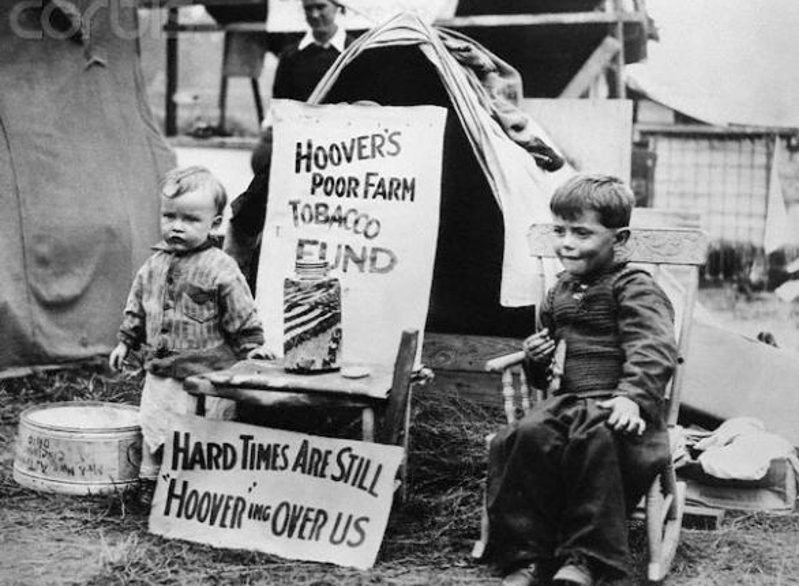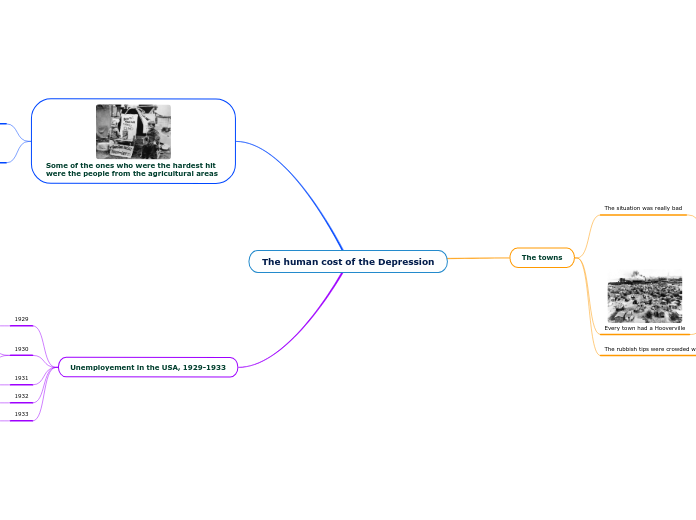The human cost of the Depression
The towns
The situation was really bad

Unemployment increased fast
People were force to sell their homes or kicked out because they couldn't pay the rent
City workers were desperately searching for work
They lived with their realtives or in the streets

Lot of people could be seen seeking for food and work
Thousands of children were living in wagons or on tents next to the streets

Every town had a Hooverville
A shanty town of ramshackle huts
Where the migrants lived
While they searched for job
The rubbish tips were crowded with families
Hoping to scrape a meal from the leftovers of more fortunate people
Through 1931
238 people were admitted to hospital in New York
Suffering from malnutrition or starvation
Forty-five of them died

Some of the ones who were the hardest hit were the people from the agricultural areas
This is because they came from a big crisis in the 20s
Because of these many of them ended up living in the road
However, some of them organised themselves to resist banks seizing their homes
For example, groups of farmers try to convince sheriffs to retire, and if they don't retire they use their pitchforks to throw them out.
Some barricaded highways
Unemployement in the USA, 1929-1933
1929
5,2% of unemployement
Representing 1.6 millions of unemployed people
1930
8,7% of unemployement
Representing 4.3 millions of unemployed people
(Increased 3,5% in one year)
1931
15,9% of unemployement
Representing 8 millions of unemployed people
1932
23,6% of unemployement
Representing 12,1 millions of unemployed people
1933
24,9% of unemployement
Representing 14 millions of unemployed people
